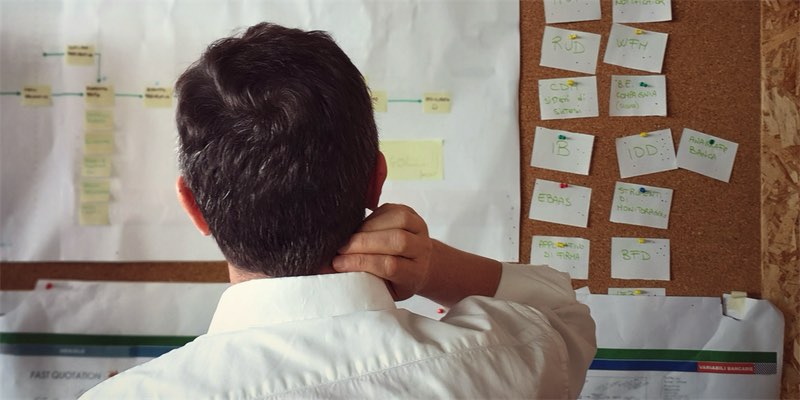Are you a fresher preparing for an upcoming job interview? Are you nervous about introducing yourself in English? What is a self-introduction? Don't worry, you have come to the right place. In this blog post from SoME, we will be discussing various tips and techniques to help you introduce yourself confidently in English during your job interview.
From understanding the purpose of self-introduction to knowing the right way to present yourself, you'll find all the information you need to make a great first impression. Read on to learn more!
What is self-introduction?
Self-introduction is the process of introducing yourself to someone else in a professional, friendly or social setting. It is usually the first impression that a person has of you, and can help determine how others perceive you.
When introducing yourself, it is important to make eye contact, use an appropriate tone of voice, be aware of your body language, speak, be yourself, be enthusiastic, ask questions, listen, and follow up.
Self-introduction for an interview is a way to show your confidence and can be a great way to break the ice in many situations. By introducing yourself in the right manner, you are more likely to make a good impression and can start making new connections.
Tips to Help You, Ace, Your Next Interview by Making a Great First Impression
If you’re preparing for a job interview, chances are you’ve already read countless articles about the importance of making a great first impression. One of the most effective ways to make a lasting impression is to give a well-crafted self-introduction.
Making a great self-introduction for the interview sets the tone for the rest of the interview, and can even help to give you the confidence to ace the rest of the interview. How to give a self-introduction? In this section, we’ll provide you with helpful tips to breeze through your self-introduction and make a great first impression on your interviewer.
1) Do your research
Researching is a key part of any job interview, and the self-introduction portion is no exception. It’s important to learn about the company, the position you’re applying for, and the interviewer before your interview. Taking the time to learn more about these three aspects will make your self-introduction shine.
Familiarize yourself with the company's mission and values and think of a few ways your skills would be an asset to the organization. Prepare for common interview questions for the position and research the interviewer’s background to get an idea of their style.
When you have a better understanding of who you’re talking to, you can better tailor your introduction to them. Researching may not be the most exciting part of an interview, but it’s critical if you want to stand out and make a lasting impression.
2) Arrive early
It is always important to be punctual for an interview, but arriving a few minutes early can help you make the best first impression. Self-introduction for an interview gives you time to get comfortable in the environment, review your materials and take a few deep breaths to clear your mind.
Arriving early also allows you to become familiar with the layout of the building and the interviewer's office, so you can be sure to make it there on time. Finally, being early is a sign of respect and demonstrates that you are organized and reliable.
Plan ahead, leave yourself enough time to get there with ease and show up a few minutes before your scheduled appointment.
3) Dress the part
When it comes to job interviews, your appearance speaks volumes about your professional attitude and commitment.
The way you dress for an interview reflects your respect for the role you’re applying for and the company you’re interviewing with. Put your best foot forward by dressing appropriately for the job.
Choose a look that is appropriate for the industry. For example, if you are applying for a corporate position, stick to a conservative business suit in either navy, gray, or black.
If you’re interviewing for a creative job, add a bit of personality to your look with a blazer and statement jewellery. Make sure you look professional and presentable and you’ll make a great first impression.
4) Make eye contact
One of the best ways to make a good first impression is to make eye contact with the interviewer. Eye contact shows that you are engaged and paying attention to what is being said. When introducing yourself, look directly at the interviewer to show that you are confident and interested.
To keep it natural, shift your gaze between the interviewer and the other person in the room. Throughout the interview, maintain occasional eye contact while answering questions and speaking.
Not only will this indicate that you are being honest and open, but it will also create a more comfortable atmosphere for both parties. This, in turn, can lead to better communication between you and the interviewer, as well as give them a better understanding of who you are.
5) Smile
Smiling is a great way to make a positive first impression in an interview. Not only will it show that you are confident and enthusiastic, but it will also make you seem friendly and approachable. When introducing yourself in an interview, try to maintain a pleasant smile throughout.
If you find yourself feeling nervous or overwhelmed, take a few deep breaths and remember to smile. Smiling will also make you appear more confident and increase the chances of the interviewer connecting with you. Make sure to keep your smile genuine and not forced, as that can come off as insincere.
6) Speak slowly and clearly
The way you speak during an interview can be just as important as what you say. Speak slowly and clearly so that the interviewer understands your points, and take pauses to ensure that they can digest the information you're presenting.
This will help you come across as confident and in control, plus it shows that you’ve given thought to your answers.
Be sure to practice before the interview so that you can determine a pace that works for you. Also, avoid using filler words such as “like” or “um” while speaking as they make it seem like you don’t know what you’re talking about. Remember, taking the time to express yourself with confidence will make a lasting impression on the interviewer.
7) Avoid using filler words
When preparing for an interview, it's important to avoid using filler words like "um", "like", and "uh". These words can make you seem unprepared and unconfident, two qualities that won't make a good impression.
Instead of relying on filler words, practice speaking with pauses and silence. Pausing can help to emphasize the points you are making and give you time to think before responding to the interviewer.
Taking a few moments to compose your thoughts will show that you are organized and ready for the conversation. Don't be afraid of silence—take a few seconds to form your response if needed. This will help you come across as articulate and self-assured during your interview.
8) Listen
Listening is an incredibly important skill during an interview. Not only does it show respect for the interviewer, but it also gives you a better understanding of what the job entails and what is expected of you.
Make sure to actively listen to the interviewer and don’t be afraid to ask questions if something isn’t clear. When the interviewer speaks, make sure to take notes so that you can refer back to them in your responses.
Additionally, listening is key to building a rapport with your interviewer, as it allows you to understand their tone and body language. The more attentive you are, the better your chances of making a lasting impression!
9) Follow up
It's important to send a thank you note to the interviewer soon after the interview. It's an opportunity to express your gratitude for their time and reiterate your interest in the position. You can even follow up with additional information about yourself that you may have forgotten to mention during the interview.
Make sure to proofread the note and send it through a professional channel like email. If you're not sure what to include, make sure to research how to craft an effective thank-you note.
Additionally, if there's been no response from the interviewer within a few days of your initial follow-up, it might be helpful to reach out again and check-in. be persistent but courteous, and don't forget to thank them for their time.
10) Practice, practice, practice!
When it comes to acing an interview, preparation is key. Before you go in for your big meeting, practice your self-introduction. Start by writing down key points you want to touch on, such as your strengths and why you’re the right fit for the position.
From there, read it out loud until you’re comfortable saying it without looking at the paper. Ask friends or family members to provide feedback and advice.
With enough practice, you’ll be able to confidently introduce yourself and make a lasting first impression. It’s worth investing time into this step, as you never get a second chance to make a first impression!
Ways to Introduce Yourself and Stand Out From the Crowd
Introducing yourself is often the first step to making a lasting impression. Whether you’re introducing yourself to a potential employer, a new customer, or a networking contact, you want to ensure that you make a positive impact. How to give a self-introduction?
In this section, we’ll explore creative and effective ways to introduce yourself and stand out from the crowd. From learning to give a great elevator pitch to come up with a unique personal brand statement, these tips will help you confidently introduce yourself and make a lasting impression. Let's get started!
1) Start with a smile
Smiling is a great way to make a good first impression. It shows that you’re friendly and approachable.
Smiling also makes you appear more confident. Start by greeting your audience with a warm smile, and it will set the tone for a positive introduction.
2) Make eye contact
When introducing yourself to someone, making eye contact is key. This shows the other person that you’re confident and paying attention.
Look the person in the eyes when you say your name, so they know you mean it. Be sure not to stare, as this can make them uncomfortable. A few seconds of eye contact is all that’s necessary to show your interest.
3) Use an appropriate tone
The tone you use when introducing yourself is important. Be professional, yet friendly and upbeat. Speak in a confident but not overly loud voice and make sure to smile as you do so.
Use appropriate language and don't be too informal or jokey. You want to give the right impression and be remembered.
4) Be aware of your body language
It's important to make sure your body language is sending the right message. Pay attention to how you're standing or sitting, maintain good posture, and avoid crossing your arms.
Make sure to keep a positive attitude and make eye contact with the person you’re introducing yourself to. This will show that you’re confident, engaged, and interested in meeting them.
5) Speak clearly
When introducing yourself, be sure to speak clearly and confidently. Project your voice and don't mumble, as this will make it hard to understand.
Use a strong, clear tone that shows confidence. Speak slowly and annunciate each word carefully. This will give your introduction the attention it deserves.
6) Be yourself
Don't try to be someone you're not. It's important to be confident and unique in your self-introduction.
Let your true personality shine through and don't be afraid to express your interests, values, and goals. Show people who you are and why you should stand out from the crowd.
7) Be enthusiastic
Let your enthusiasm shine through when introducing yourself. Speak confidently and with enthusiasm, and make sure your facial expressions match the message you are conveying.
Smile and be positive, and don't be afraid to show your excitement. It will help you make a lasting impression.
8) Ask questions
Engaging with the people you are introducing yourself to is key. Ask questions to learn more about them and show your interest.
Think of something you can ask that will start a conversation. It can be as simple as, “How long have you been in this industry?” Asking questions can help create a stronger connection and will make you stand out from the crowd.
9) Listen
Listening is a key part of introducing yourself. Pay attention to the other person and be sure to respond to what they are saying.
Focus on understanding them and showing genuine interest in their views. Taking the time to listen will show that you value the conversation. Active listening also helps to build trust and relationships.
10) Follow up
Once you've made an introduction, make sure to keep the connection alive. Reach out via email, call, or text periodically to maintain your relationship.
This is important to make sure that your new contact remembers you and what you discussed. Show your appreciation for their time and connection.
Summary
Introducing yourself in English is an important skill to have for interviews and other professional interactions. It helps build trust, encourages active listening, and helps you delegate tasks more effectively. It also helps you develop relationships with your co-workers, improve your writing skills, and ultimately get promoted. How to give self-introduction? With the right approach, self-introductions can be a powerful tool to set yourself up for success.
Useful Resources: Types of written communication | Formal and Informal communication examples | Grapevine communication types




















